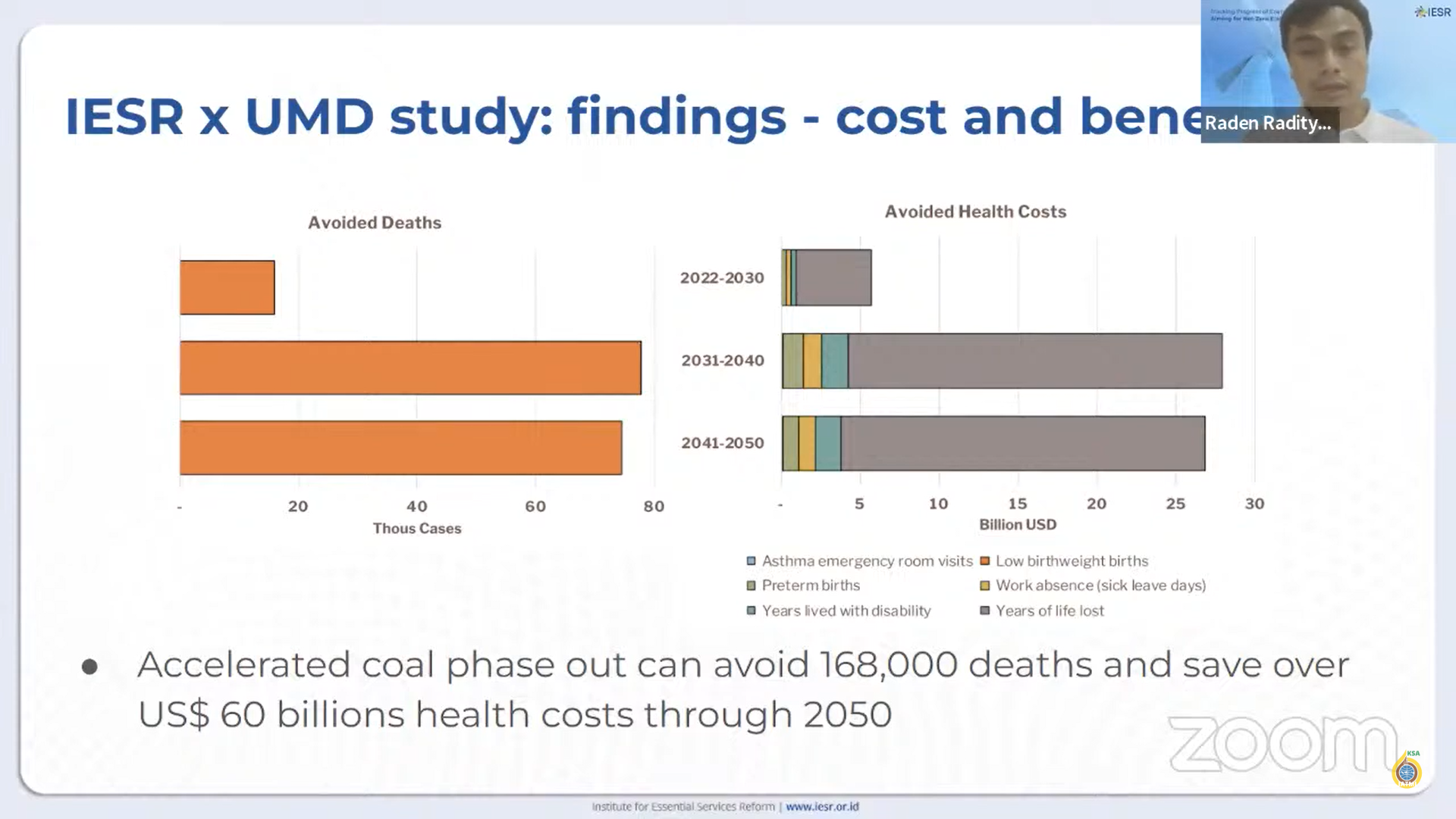The energy transition has become a global necessity as an effort to mitigate climate change. Fossil energy burning is proven to contribute greatly to the increase in greenhouse gas (GHG) emissions which causes an increase in the average global temperature. For countries whose energy systems are mostly supported by fossil energy, this requires special attention, because they also have to take the right steps amidst the available options to decarbonize the energy system which means ending the operational life of coal power plants.
Raditya Wiranegara, senior researcher at the Institute for Essential Services Reform (IESR), during a webinar entitled “Financing Indonesia’s Coal Phase-Out: A Just and Accelerated Retirement Pathway to Net-Zero” Saturday, 19 November 2022, explained two scenarios that could be taken for coal-fired plant. These two scenarios aim to provide more space for renewable energy to enter the PLN grid.
The first option is to retire old CFPPs and are no longer operationally effective and efficient. To examine this option, IESR collaborated with the Center for Global Sustainability, University of Maryland, United States of America.
“Our research shows that there are 9.2 GW of coal-fired power plants that can be retired starting from 2022-2030,” said Raditya.
By retiring all coal plants, and building renewable energy-based plants, Indonesia can achieve net zero emission status by 2050 aligned with the Paris Agreement.
In addition, there are various socio-economic and environmental impacts that can be avoided. Until 2050 it is estimated that there will be 168,000 deaths that can be avoided with the retirement scenario of all coal power plants.
The second option is to operate the CFPP flexibly. Flexible CFPP operation means changing the pattern of CFPP operation from initially operating 24 hours a day to support the base load of the electricity system, to only supporting peak loads at certain hours.
“This flexible operating pattern allows the addition of renewable energy supplies, especially energy sources that depend on certain conditions such as solar and wind,” explained Raditya.
Raditya added, this flexible operating pattern is suitable for CFPPs that are still young, as there are many in Indonesia. In the study report “Flexible Thermal Power Plant: An Analysis of Operating Coal-fired Power Plant Flexibly to Enable the High-Level Variable Renewables in Indonesia’s Power System” it is explained that technically the CFPPs in the Sumatra, Java-Bali and Sulawesi can be operated flexibly. There will be differences in the level of efficiency, the amount of emissions, and the investment costs required from one unit to another depending on the age of the coal plant. A relatively young CFPP requires lower retrofit costs because the infrastructure is still relatively strong to support a flexible operational pattern.
For this reason, careful planning is needed to operate the Coal plants flexibly as well as to retire the coal plants and increase the capacity of renewable energy in the system. The government through PLN can also include a flexible coal plant operation pattern in the electricity supply planning document to provide regulatory certainty to investors.
An explanation of flexible PLTU operations can be watched via the following channel.

